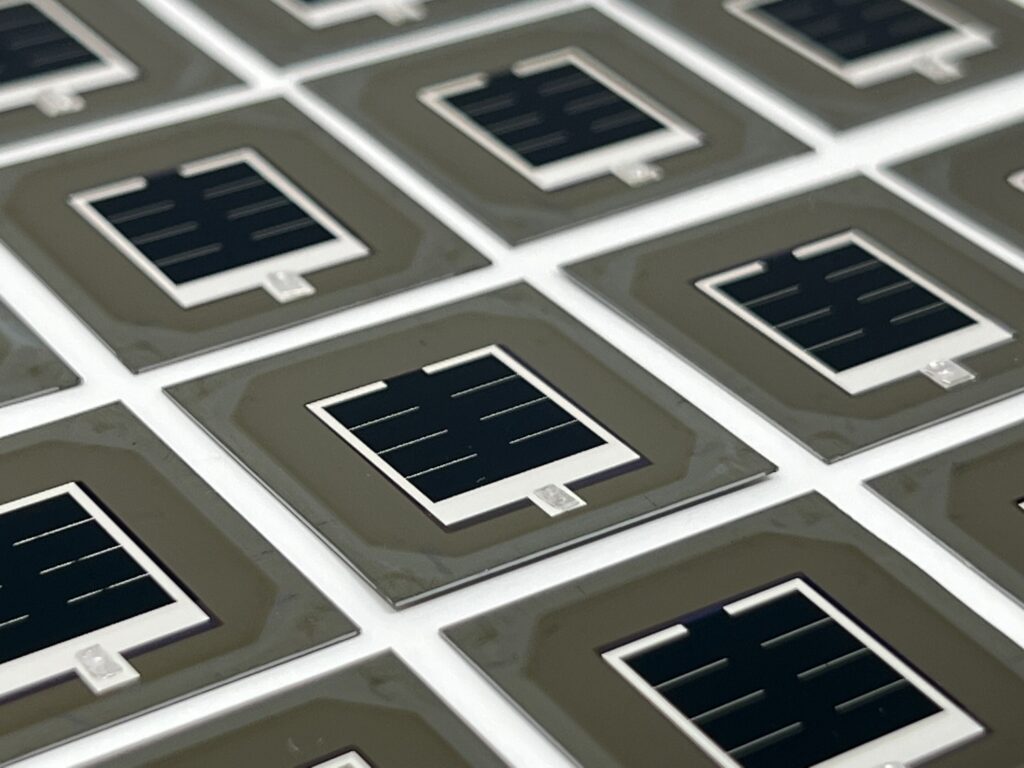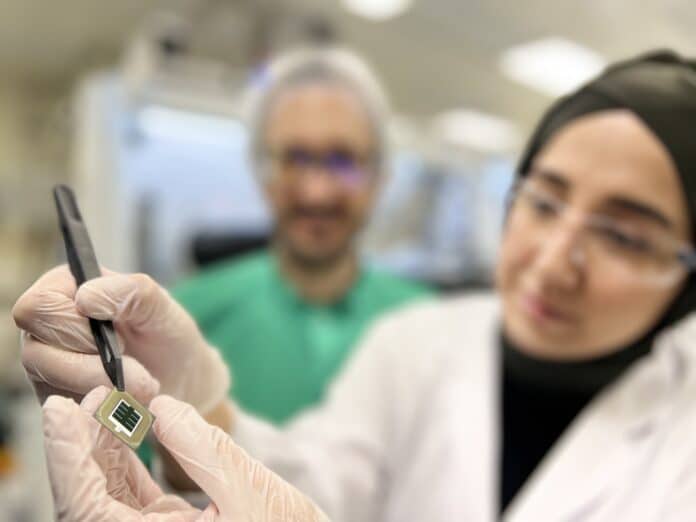Crystalline silicon technologies have dominated the global photovoltaic market for the last 30 years, with module efficiencies of around 20-22%. However, the field of solar energy is wanting for innovative materials and approaches that yield even higher efficiencies in support of global renewable energy goals.
Tandem solar cells combining silicon and perovskite sub-cells are widely regarded as promising, high-performing, and viable alternatives to conventional crystalline solar cells. The market predictions estimate the tandem perovskite/silicon technologies will comprise more than $10 billion of the global photovoltaic market share by 2032.
In December 2022, scientists in Germany set an efficiency record for tandem perovskite solar cells, creating a cell with an efficiency of 32.5%. Now, they have been surpassed by scientists at the King Abdullah University of Science and Technology (KAUST).
Researchers in the KAUST Photovoltaics Laboratory (KPV-Lab) of the KAUST Solar Center have produced a perovskite/silicon tandem solar cell with a power conversion efficiency (PCE) of 33.2%. According to the researchers, this is the highest tandem device efficiency in the world to date.
The tandem device was certified by the European Solar Test Installation (ESTI) and listed at the top of the National Renewable Energy Laboratory’s (NREL) Best Research-cell Efficiency Chart.

Since 2016, the KAUST team has steadily been perfecting the perovskite/silicon tandem cell concept. They are developing new materials, methods, and device structures and tackling fundamental challenges, such as how to uniformly cover the micrometer-sized pyramidal surface of silicon cells with perovskite material.
The resulting tandem solar cell combines perovskite top cells with industrially compatible, two-sided, textured silicon bottom cells. The perovskite top layer absorbs blue light best, while the silicon foundation absorbs red light best. Researchers claim that the combination of these materials maximizes the capture and conversion of sunlight into electricity more efficiently than the conventional single-junction silicon analogs.
“This new record is the highest PCE of any two-junction solar cell under non-concentrated light, attesting the tremendous promise of perovskite/silicon tandems to deliver ultra-high performance photovoltaic modules, which is critical to rapidly achieve renewable energy goals towards combatting climate change,” said Dr. Stefaan De Wolf, who led the KAUST team.
Researchers are currently exploring scalable methods to produce industrial-scale perovskite/silicon tandem cells with areas exceeding 240 square centimeters. Also, they’re exploring strategies to obtain highly stable tandem devices that will pass the critical industrial stability protocols.
